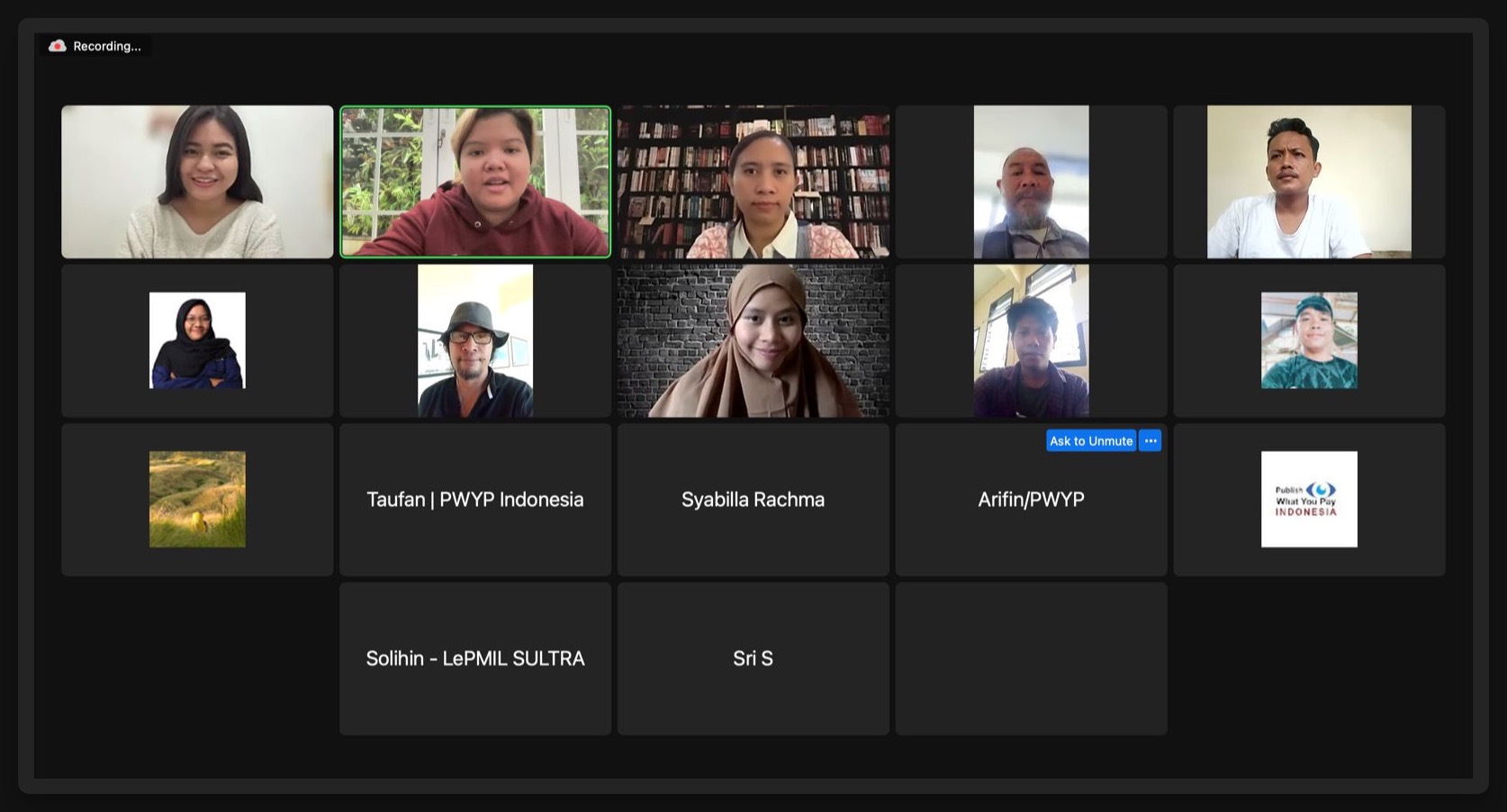Jakarta – Last November 2023, Ersya Nailuvar, a representative of the National Secretariat (Seknas) of Publish What You Pay (PWYP) Indonesia, participated in the Suluh Penggugah training themed Public Campaigns for Social Change. The training, organized by Communication for Change with the support of the Ford Foundation, was to equip Civil Society Organization (CSO) members to run effective, creative, and strategic public change campaigns. Strategic and creative campaigns are not just about creating visual beauty or impressive messages but also accelerating social change. By including strategic elements, campaigns can create momentum, reach diverse groups, and build solidarity among them. In the complex world of CSOs, creative campaigns also help overcome communication challenges. By simplifying complicated concepts, campaigns bridge the understanding gap and open the door to broader participation.
Through this substantial learning, Ersya shared knowledge of practical and creative campaigning strategies through the PWYP Knowledge Forum (PKF) online on February 1, 2024. At this PKF, Ersya presented theory and opened up space for discussion and sharing experiences of communication strategies between coalitions. What was offered by Ersya?
Strategy determines the best way to get there (goal) from here (starting point).
Strategy is a practice that aims to determine the best way to achieve a goal from a given starting point. It involves a deep understanding of where we are now and where we want to be by the endpoint. It also consists of identifying these two points’ obstacles and determining the right approach to overcome them. Thus, a strategy focuses on planning the steps to be taken and thoroughly considers the factors that affect the journey toward the goal.
The Who, To, With approach to describing change
We can choose the Invite, Who, To, With approach to describe a change. First, we need to identify the group or individual who is the target of the communication, which is then referred to as an “Invite.” Next, we need to understand the aspects that the group or individual still retains, which can be mindsets, feelings, or behaviors that contribute to the problem, referred to as “Which.” After that, we need to determine the desired direction, which is how we want the group or individual to think, feel, or behave, referred to as “To.” Finally, we need to determine the approach or strategy used to change those thoughts, feelings, or behaviors, referred to as the “How.” Following this approach can design a more focused and targeted change strategy.
Developing a Theory of Change
When targeting a campaign at the government or the masses, an essential first step is developing a solid change theory. It is important to remember that not all organizational or program goals can be achieved through public campaigns. However, for objectives that can be achieved through public campaigns, it is vital to ensure that each campaign focuses on one specific purpose. Successful campaigns must be clearly defined.
Empathy Map
Using the Empathy Map scheme can help campaigns become more focused. Aspects such as access or infrastructure and challenges in campaigning can be better filtered through the Empathy Map.
From-Being Table
The From-Being Table can help us better position ourselves with the campaign target so that the campaign can be more targeted.
Elephant, Coachman, and Track Metaphor. The elephant, coach, and track metaphor can be likened to a person’s frame of mind. Through this framework, we can find many explanations for why the campaign target has yet to do what we want.
Moral Foundation Theory
Generally, people stick to a particular opinion and cannot be persuaded to change their beliefs. However, we can create social change by touching the principles of a person or a group by introducing a different foundation to their beliefs.
Creative Ideas in Digital Media
Bringing creative ideas to life on digital media strengthens online campaigns. Despite social media being the main channel, campaigns often must reach the desired target. Learning new things such as articles, infographics, tutorials, and online courses is necessary to improve the campaign’s quality.
Impact vs. Effort Matrix
Impact vs. Effort Matrix can help to identify and evaluate the effects on the campaign. By analyzing the relationship between importance and implications, campaigns can efficiently allocate resources and direct efforts to the most critical areas.
